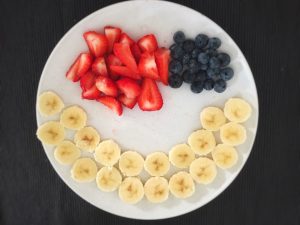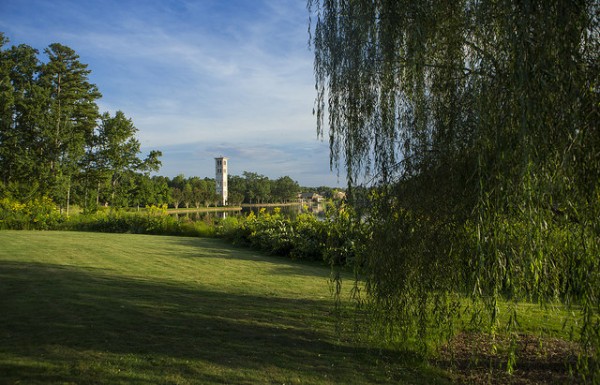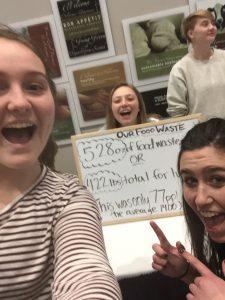Pollinators in the US have been in crisis for more than a decade. Bee populations in particular have plummeted by 87 percent since the 1990s. As one of the Obama Administration’s last environmental moves, the rusty patched bumblebee became the first bee in the United States to be protected under the Endangered Species Act. As bees and pollinators face endangerment, agriculture in the U.S. faces dire losses, as bees alone contribute more than $15 billion to U.S. crop production. But there are many ways individuals can make a difference and help save the bees, and much of the following information is recommended by the U.S. Fish and Wildlife service.
Plant a Pollinator Garden
Creating natural habitats for pollinators is a great way to combat habitat loss and create safe spaces for species like the bumblebee. Here are some tips to get you started:
- Pick plants that bloom at various times of year, so your garden always has attractions for pollinators. Late winter is a good time to sow seeds for spring and summer, and bulbs planted in autumn will also begin growth in spring. Once the soil warms, sunflowers can grow easily throughout the year, especially if they’re cut back annually.
- Plant in clumps rather than isolated stalks, and try varying the types and colors of the flowers. The NAPPC’s Pollinator Syndrome table lists the types of flowers that attract what pollinators (including bats, hummingbirds, bees, butterflies, etc.). Bees in particular see in ultraviolet, so red flowers are indistinguishable from green and therefore harder to recognize. Bees are more often attracted to Yellow, white, violet, purple, and blue flowers.
- Native flowers are always a good choice because they are familiar to your local pollinator populations, and may be chosen as larval hosts. Field guides are great resources to tell you what plants butterflies eat at various larval stages, and the NAPPC’s Ecoregional Planting Guides. identify pollinator friendly plants. In addition, certain plants like milkweed will attract pollinators (in this case monarch butterflies). Local wildflower mixes are great choices, because they include plants familiar to bees, are varied, will grow in clumps, and are adapted to your local climate; they often simulate natural meadow habitats for pollinators.
- Leaving a few weeds here and there can also attract pollinators, as weeds are often local species of flowers. Letting your grass grow naturally is a great way to give pollinators shelter and natural habitat while also cutting down on herbicides.
- Birdbaths and other sources of isolated water will also attract bees, especially in the summer, and if you change it occasionally, you won’t have mosquito problems.
- Border fruits and vegetables with native flowers to improve pollination of your crops and support bees when crops aren’t blooming; this also attracts other pollinators such as wasps and hover flies that control crop pests.
Create Nesting Sites for Bees
Bees nest in the ground or in dry wood/plants. They most nest alone, excluding bumble bees and non-native honey bees. In fact, while honeybees live in hives and colonies, 70 percent of bee species nest underground or in natural cavities. Bumble bees nest in natural cavities such as holes in the ground. To create nesting sites, maintain a small, undisturbed patch of dry, sparsely vegetated ground. Avoid mulch if possible. The more sun the better. Bees such as carpenter bees prefer dry wood, so consider leaving a log or two near your garden. You can also simulate natural habitats by drilling holes in preservative-free wood to create an artificial habitat. It will create an observable habitat for your local bees. Such habitats should be monitored, however, so that they do not become homes for non-native species that will compete with local bee species. You should also use an inner paper liner changed annually to prevent the spread of diseases between bee colonies (diseases are a key cause of colony collapse disorder).
Avoiding Pesticides
Pesticide residue can kill pollinators for days after its use, often killing the natural predators of pests and exacerbating the problem. Neonicotinoid pesticides, in particular, remain in the soil for years. They include imidacloprid, Acetimacloprid, Clothianidin, Thiacloprid, Thiamethoxam, Dinotefuran and Nitenpyram. Such treatments are especially harmful if applied while flowers are in bloom, as they will contaminate pollen and nectar, eventually getting into honey, and then often consumed by humans. They are also one of the major culprits of Colony Collapse Disorder. To protect pollinators from pesticides, try alternative methods, such as removing pests by hand (using gloves – you can also spray aphids with water or use garlic to get rid of them), creating habitats for natural pest predators (like birdhouses), and learning about integrated pest management. If you do use pesticide, try using ones which target only one species and do not persist on plants. You can also use the lowest effective application rate and avoid spraying when flowers are blooming. Pollinators are least active in the late afternoon and evening, so this is a good time for pesticide application. Use sparingly, and choose liquid sprays or granules instead of dusts which contaminate other plants (Be conscious of the wind!). Keep pesticides away from water or sensitive habitats, and avoid micro-encapsulated formulations which can be mistaken for pollen by pollinators. Rinse your pesticide tanks to avoid cross-contamination.
More Ways to Help
- Eating organic is a great way to avoid supporting the use of Neonicotinoid pesticides. Supporting organic gardeners is supporting bees. (Fact: A significant challenge for beekeepers is making sure hives are in areas where there are no chemical sprays within 3 miles, as this is the only way to protect bees from pesticides an ensure truly organic honey.)
- Bees rarely sting, and if they become a problem, local bee keepers are often willing to help relocate the populations. Buying local honey is also a great way to support your local be populations.
- You can help bees in your state or city by contacting your representatives and using your power as a constituent to help save bees. Ask them to stop the use of pesticides in public spaces such as parks and promote the use of integrated pest management as well as wildflowers.
-Courtney Kratz



